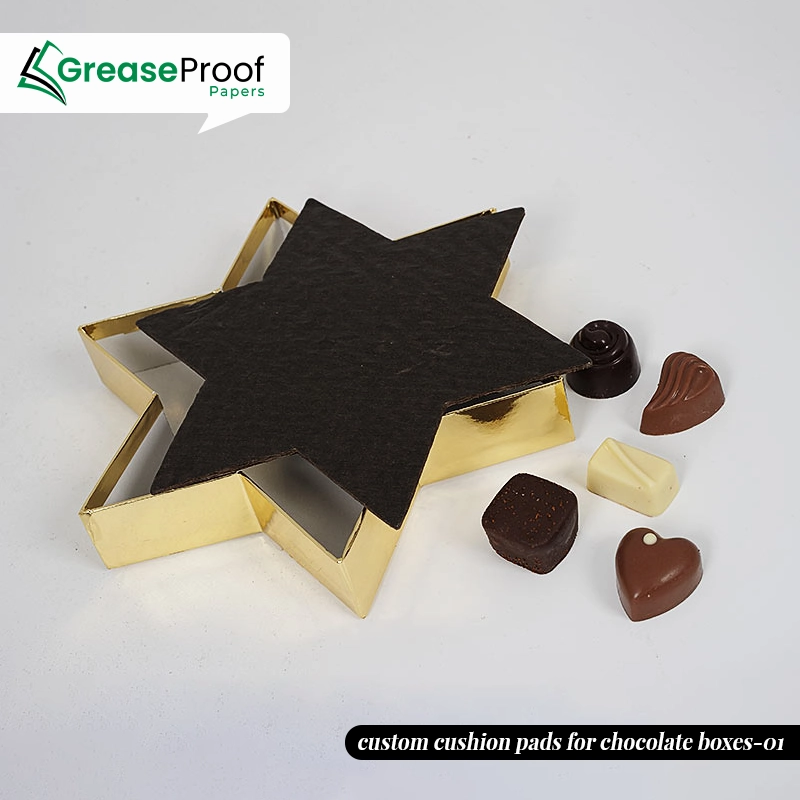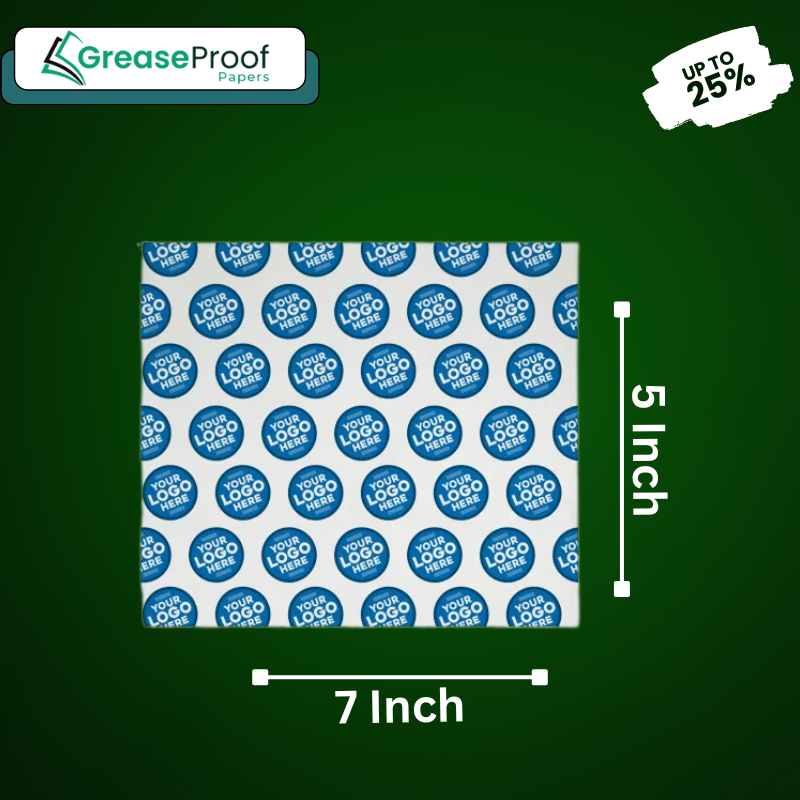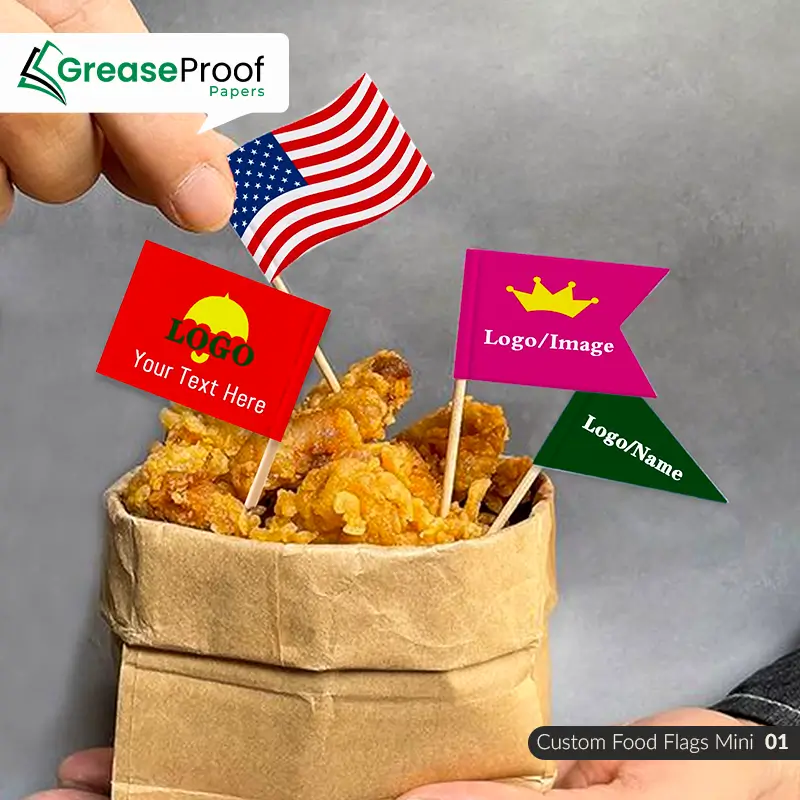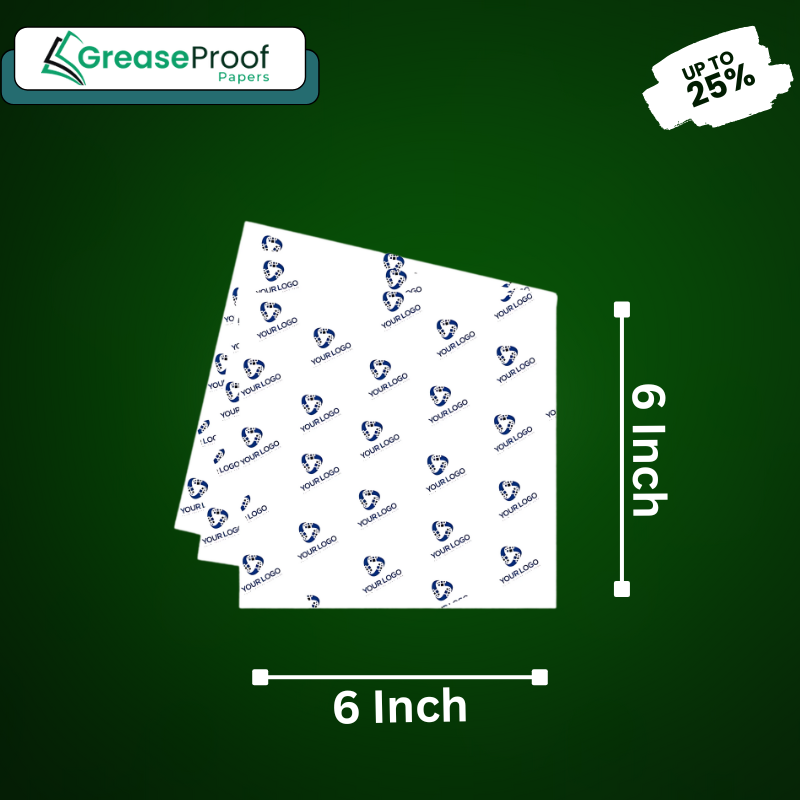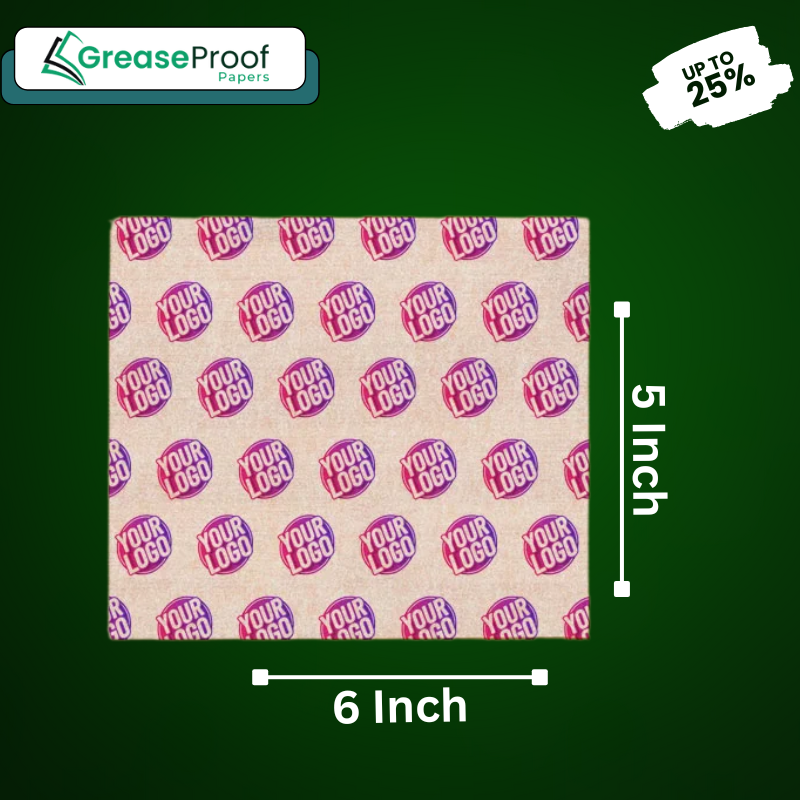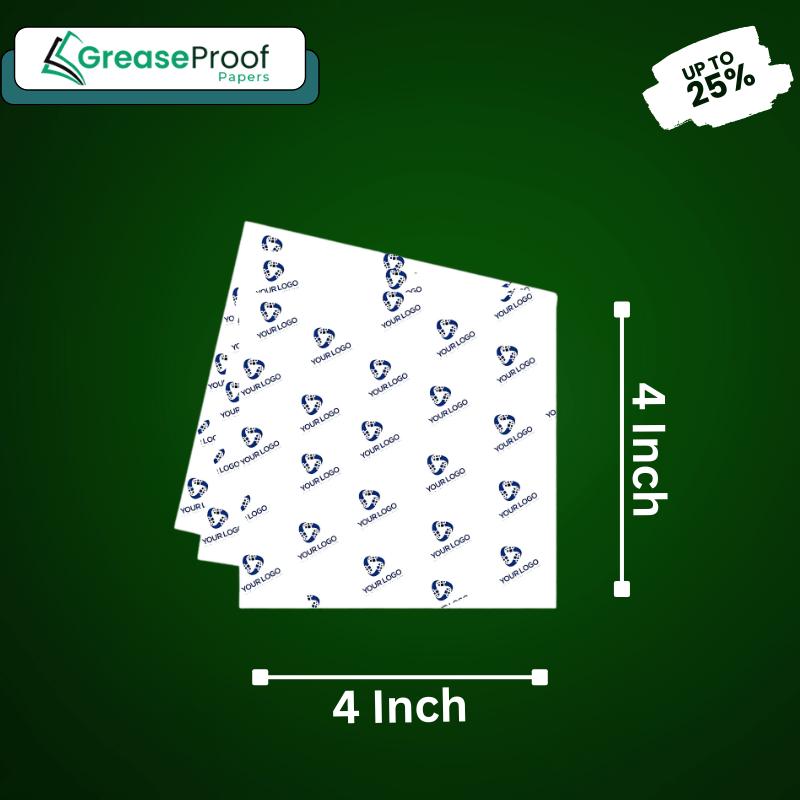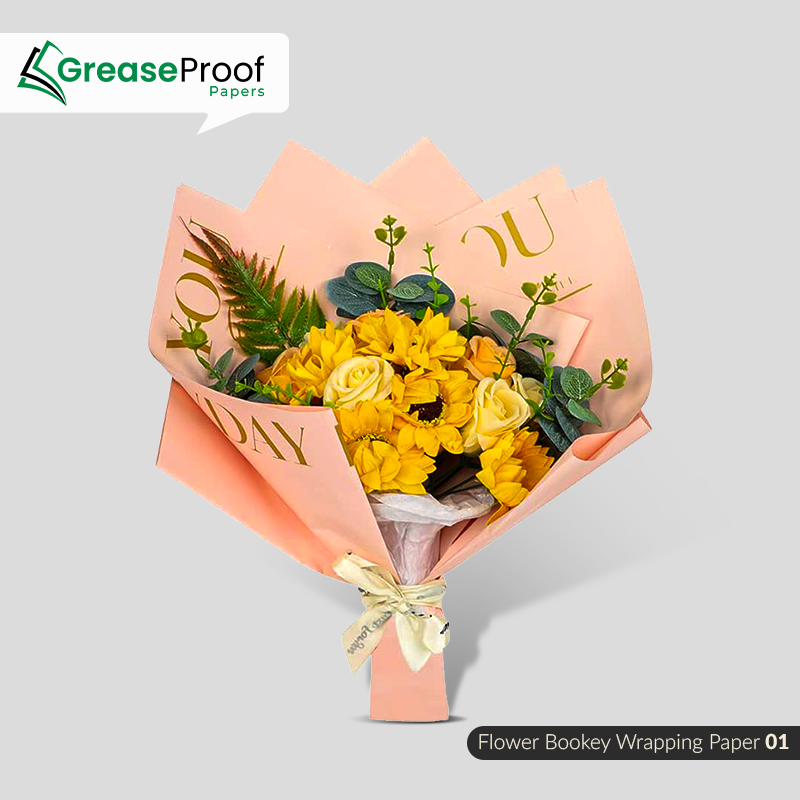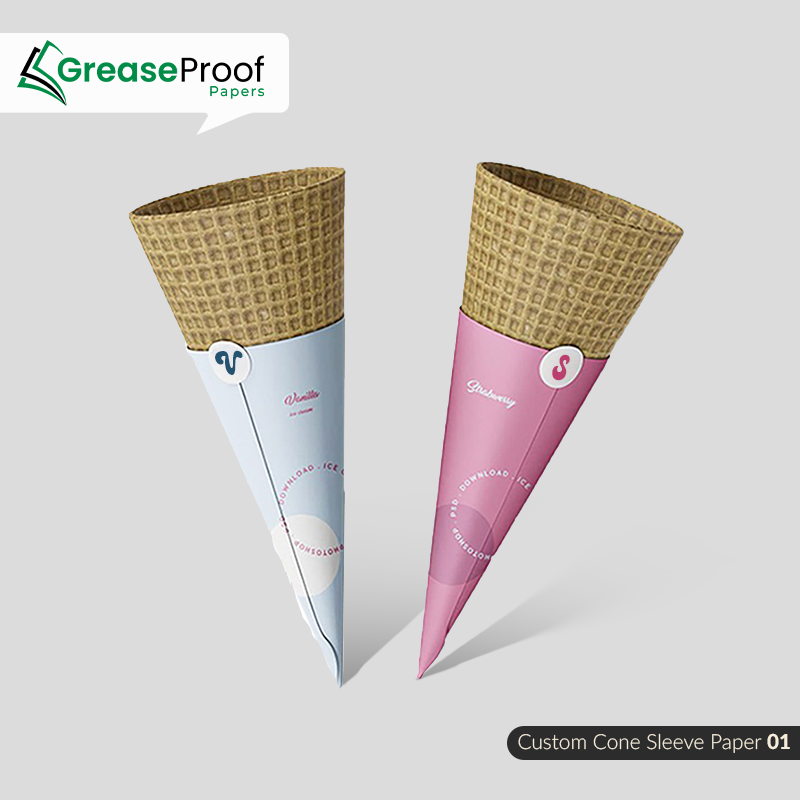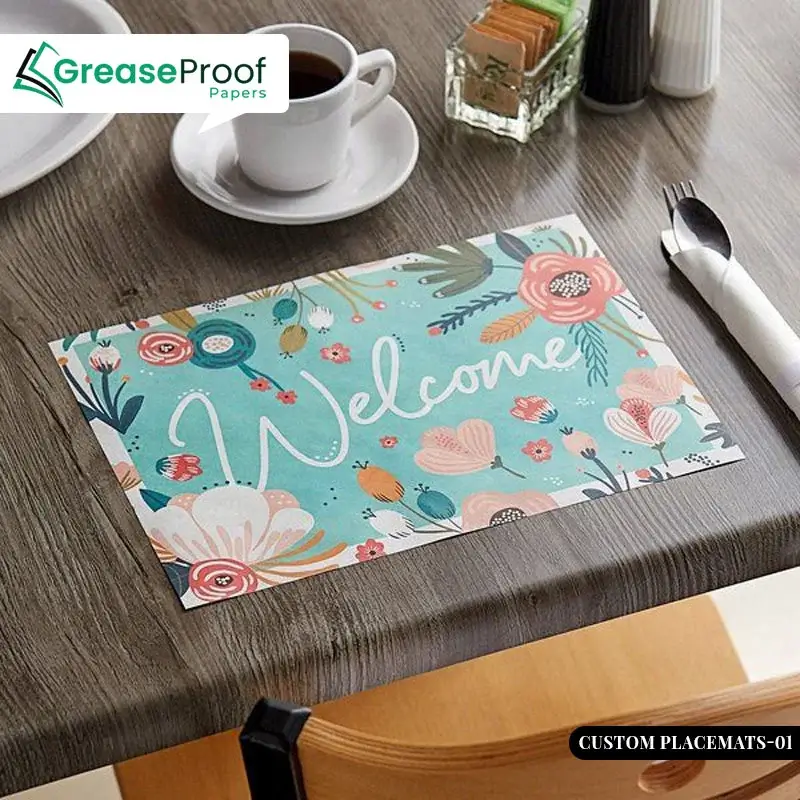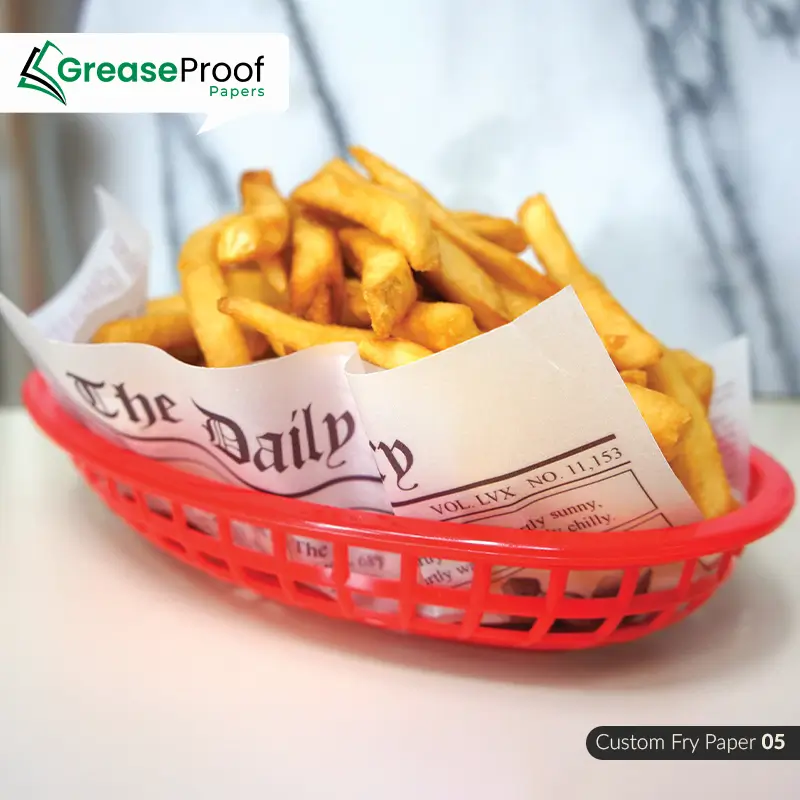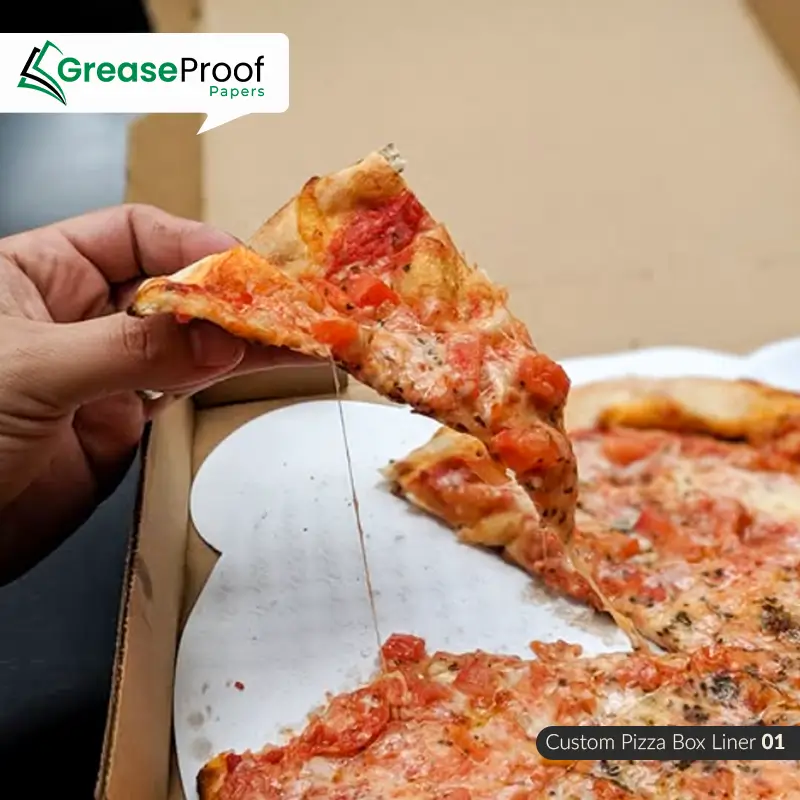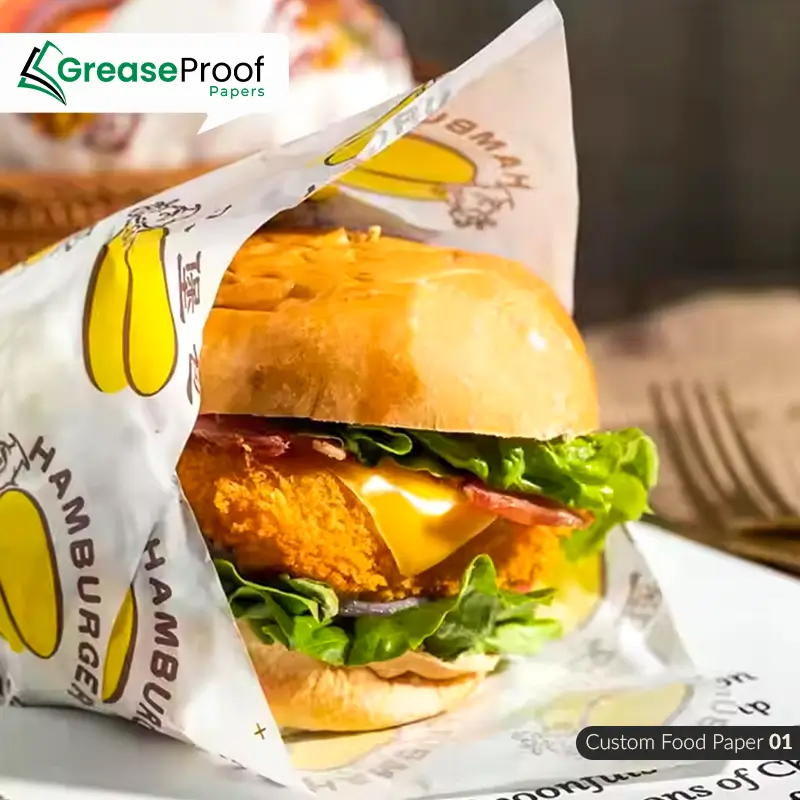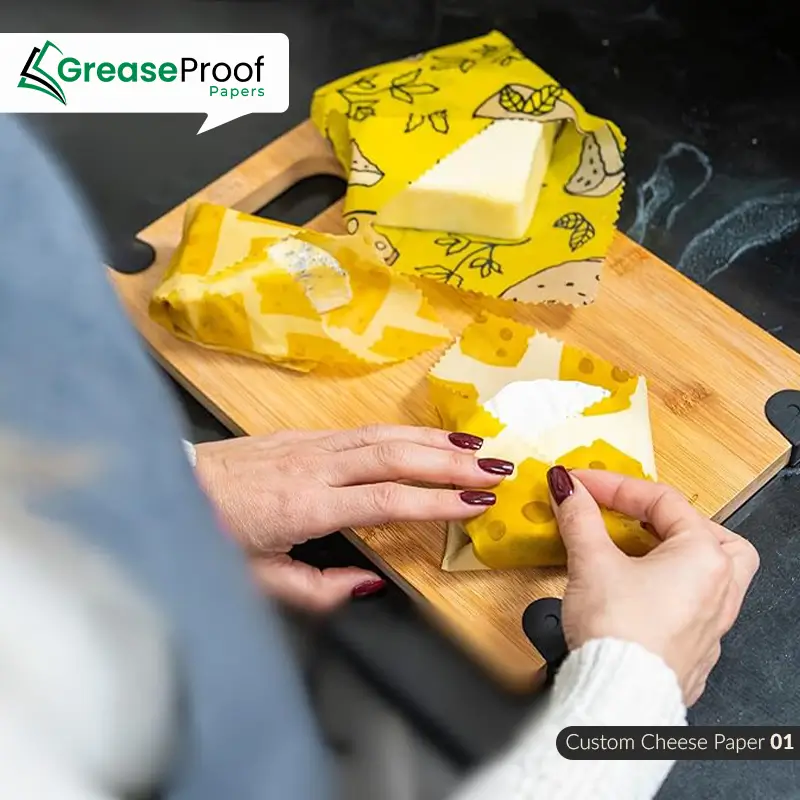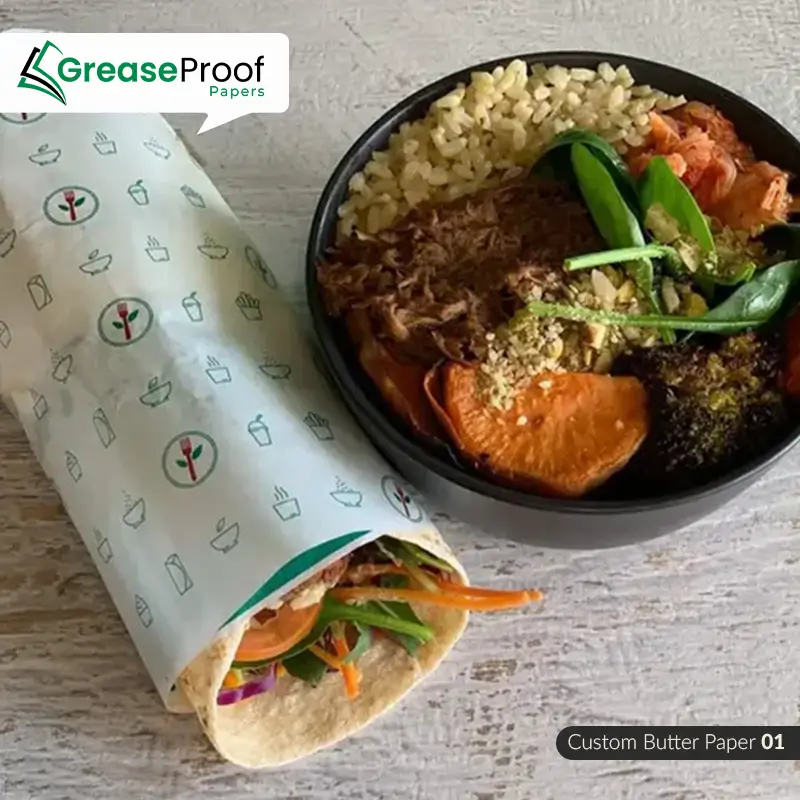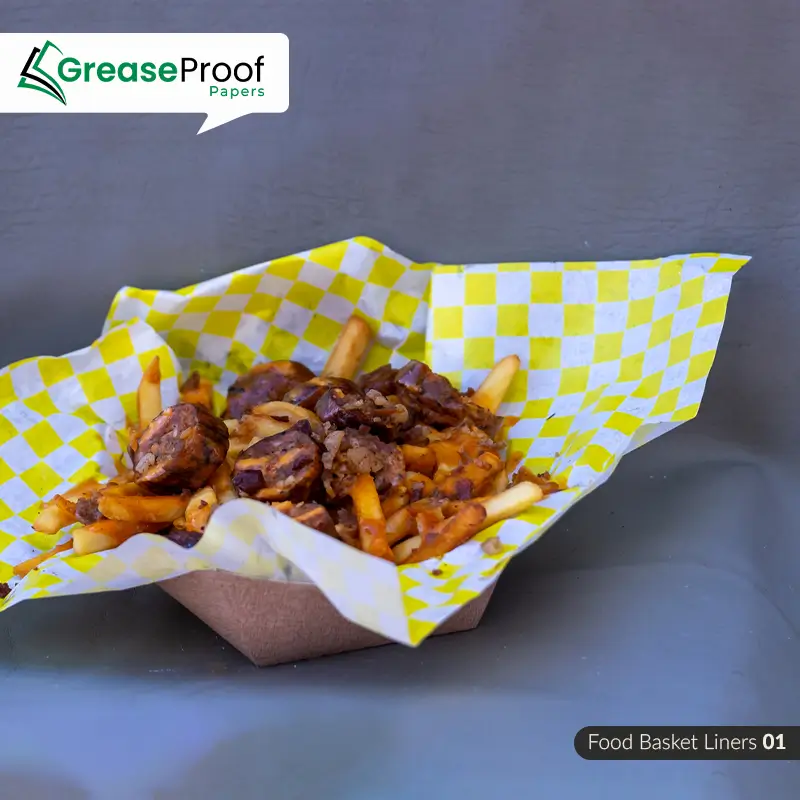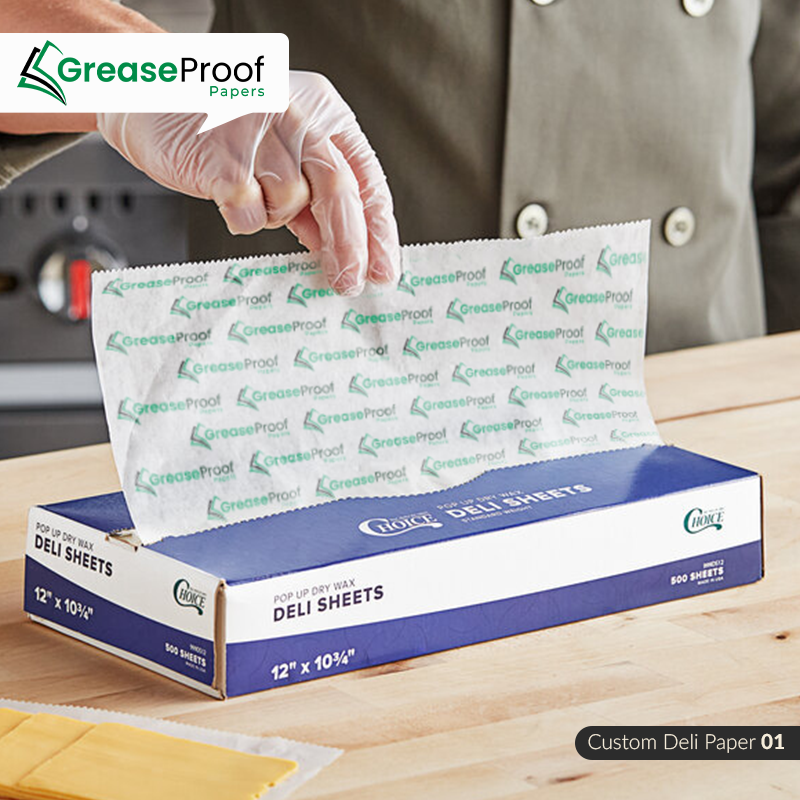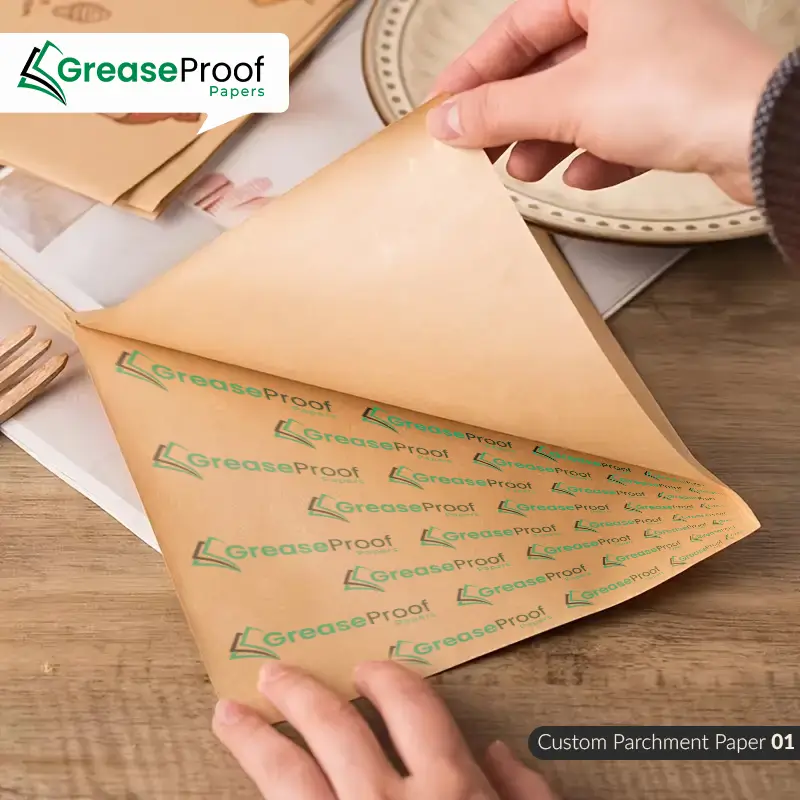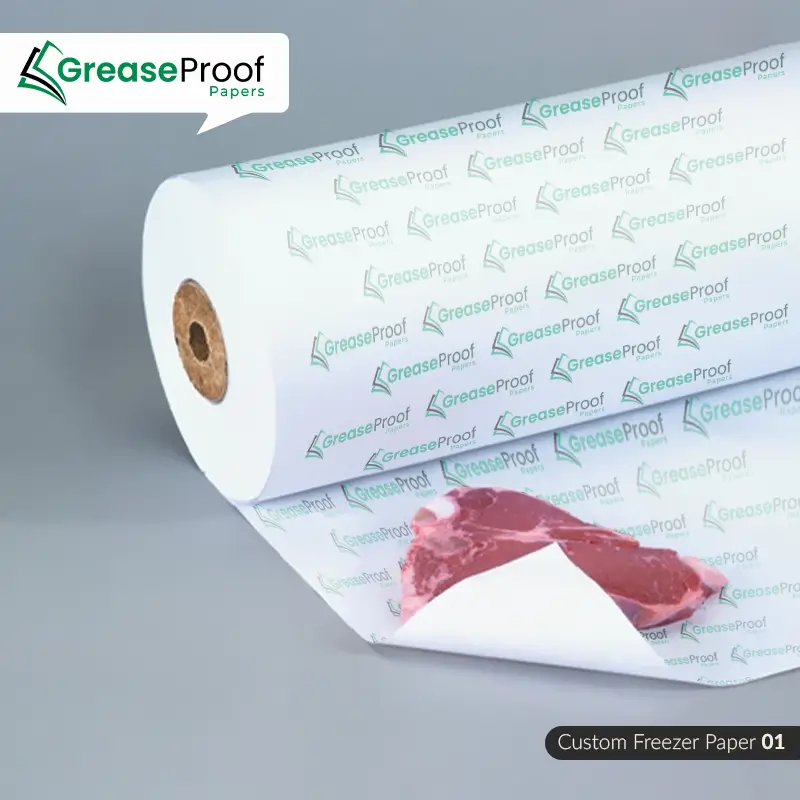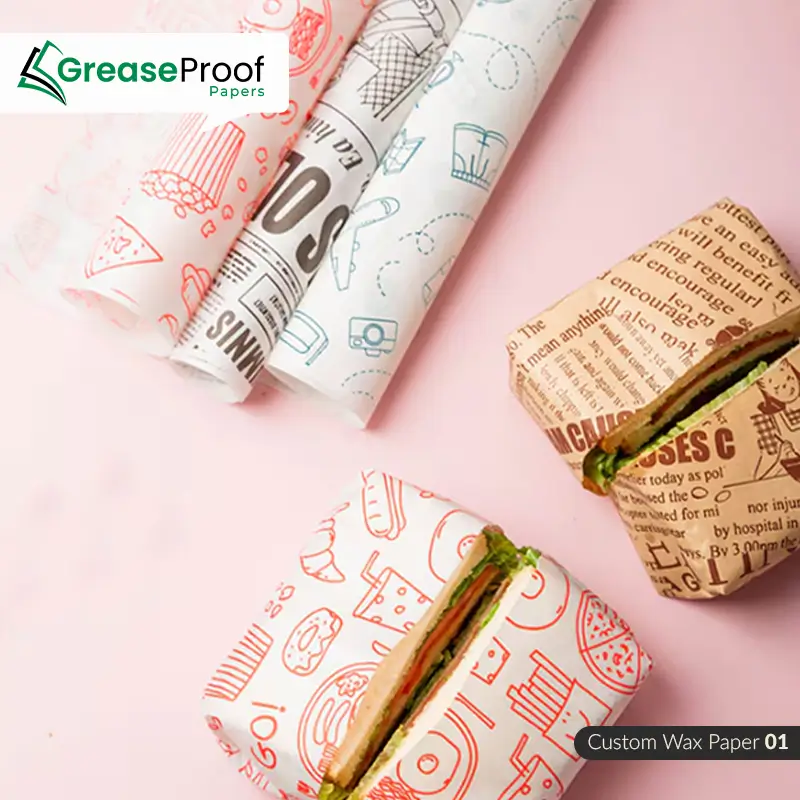
Comparing Parchment Paper Vs Butter Paper
November 8, 2024 Uncategorized
Perfect cooking and baking depend on the selection of the right material and utensils or tools. Custom food papers or liners are essential in the cooking process. Specifically, custom parchment paper and butter paper are used for various purposes in cooking and baking.
When it comes to comparing parchment paper and butter paper, most people get confused, and some even consider them the same. Although many features of custom wraps are alike, several characteristics make them suitable for different purposes.
Parchment and custom-printed butter paper rolls are both the best options to promote a brand when they are designed with the logo and the other promotional elements of the brand. However, when it comes to physical characteristics, both serve slightly different purposes. So, to get an in-depth analysis of the differences between both papers, let’s thoroughly read the blog.
Similarities Between Parchment Paper and Butter Paper
Before moving towards the differences between the varieties of custom greaseproof paper, we will first understand the areas in which they are similar to each other. The main similarity between them is that they are FDA- and FSC-approved, which is why all food-related businesses use them regularly. The similar characteristics of butter and custom parchment paper sheets are:
Food-Safe
As we know, custom food papers are manufactured using wood pulp, which makes them entirely safe for direct contact with food. Cellulose fiber is one of the key components used to produce the paper, and it easily degrades.
Greaseproof
Butter and printed parchment paper have a grease-resistant coating. These coatings and the papers’ compact structure give them grease-resistant properties and prevent any fat or oil from seeping through the sheets.
Nonstick
Butter paper has a wax coating, and parchment sheets have a silicone coating; both are ideal options for giving material nonstick properties. However, silicone coating has much higher nonstick properties than wax coating.
Convenient For Wrapping
Regardless of the type of coatings applied on the surface of the paper, you can use both of them to wrap different food items such as sandwiches, cheese slices, burgers, line for bakers, etc. They are an excellent alternative to sandwiches, deli, and food basket liners.
Available In Pre-Cut or Roll Form
Due to the customization option of custom-printed parchment paper and butter paper, you can select them in the dimensions of your choice. You can also select pre-cut sheets or rolls.
Difference Between Parchment Paper Vs Butter Paper
Due to the differences in coating and certain mechanical and chemical manufacturing processes, custom-printed butter paper and parchment paper are different in various ways. Some of the key differences are:
Heat Resistance
Parchment paper is an excellent option for baking and roasting because it is resistant to high temperatures. It can endure 420-450°F (215-230°C) without melting, burning, or deteriorating. The application of a silicone coating and the treatment of paper with sulfuric acid give it this much resistance to heat.
On the contrary, butter paper’s heat resistance is just like wax paper’s. It is moderately resistant to heat, which is why you can not see it under high temperatures such as those of ovens. When this paper is exposed to high temperatures, it sticks to the food or the utensils and sometimes catches fire.
Coating Type
Parchment paper contains a silicone coating that gives it nonstick properties and the ability to withstand temperature. This coating does melt and does not transfer fees to food under heat. On the other hand, butter paper has a thin layer of wax that melts when exposed to temperature saturation.
Primary Use
Parchment is highly resistant to heat and is nonstick, so it is used in baking, roasting, and cooking where high heat is required. This paper is mostly used to line baking pans. Butter paper is used mainly to wrap foods such as sandwiches and baked goods. These foods are heated under moderate temperatures and do not require high exposure to heat, which is the perfect option for butter paper.
Water Resistance
Parchment sheets are water resistant, which helps to prevent the food from getting soggy, moist, or oily foods. You can easily maintain the quality of the food using parchment sheets. Butter sheets are also water resistant to some extent but when constantly exposed to moist conditions. Butter sheet is sufficient for short-term uses but not as durable as parchment.
Environmental Impact
The application of silicone on parchment paper makes it harder to decompose. However, if you are using an unbleached version, then it can decompose easily under the right conditions. However, it is less biodegradable than natural uncoated paper. Due to the application of wax, butter sheets are not biodegradable. A paraffin-based coating is mostly applied, which is unsustainable.
When To Use Parchment And Butter Paper
Due to major differences, both custom food wraps are used for different purposes. By understanding the right use of paper, one can cook the meal efficiently and prevent any kind of mess or damage. Some of the usages of parchment paper are:
Baking and Roasting
Reason: Parchment paper is coated with silicone, which is sticky and resistant to heat. Thus, cooking methods that need high heat, such as baking and roasting, can be done with this method. Due to the nonstick surface, food does not stick to the pan, baked items can be easily molded, uneven baking does not occur, and partially burned food is not cooked. It also reduces the requirement of greasing the pan. This makes baking faster and, most importantly, healthier since the number of extra fats or oils added is greatly reduced. Food is baked uniformly, and you can easily mold the baked items. This also reduces the creation of mess.
Cooking In High Heat
Because parchment paper is heatproof, it is ideal for cooking methods that involve exposure to high heat, such as en papillote cooking (cooking food in a paper-enclosed packet). In this method, the natural moisture component of the food can be retained to a lesser extent, resulting in juicy and soft food. Because parchment paper is heat resistant, it does not burn or melt. Its shape is retained, which helps to contain moisture and flavor in food during baking. Fish, vegetables, and chicken breasts can be cooked by wrapping them in parchment sheets, and they will have a delicious appearance and soft texture without requiring fat.
Rolling Out Dough
For sticky or sensitive doughs, it can be used as a nonstick surface that is also strong and does not stick to the dough. This assists in preserving the dough’s form and structure and enhances its quality. While you are kneading the dough or rolling it out on a countertop or any other flat surface, it sticks. Parchment paper does not need to be dusted, which is beneficial in preserving the dough’s shape. The dough does not stick to the paper, and more importantly, it can be removed without breaking or altering its structure. This includes a cookie, pie crust, or pastry dough so that their shape can be retained without any wastage.
Butter is used in the following circumstances.
Food Storage
Butter paper is completely greaseproof, but its heat-resistant properties are low. That is why it is usually preferred to wrap food that is consumed at room temperature or stored in the refrigerator. The plastic coating makes it a perfect option for foods such as sandwiches, cheese, and biscuits that require protection from heat. Butter paper is cheap and is suitable for temporary storage of foods and other products. The layer of wax protects food from sticking to the paper while retaining the texture. Food remains fresh and can be easily opened from the paper without sticking, making it ideal for preparing snacks or for quick storage.
Freezing
Butter paper is used because it has a wax coating that does not crumble or tear. It’s also appropriate for wrapping foods intended to be frozen, as it lays a layer between the different items to prevent them from sticking together. Butter paper offers a smooth, quick-release surface for products such as baked goods, burgers, or meat. It protects food items from freezing together so that you can easily separate different portions when the food is thawed. It also effectively protects foods from freezer burn.
Difference |
Parchment Paper |
Butter Paper |
| Heat Resistance | Heat-resistant and safe to use in ovens up to 420-450°F. | Not heat-resistant; wax coating will melt at high temperatures. |
| Coating Type | Silicone coated for non-stick surface | Wax coated on both the sides. |
| Primary Use | Ideal for baking, roasting, and cooking where high heat is required. | Mainly used for wrapping and storing food items; unsuitable for high-heat applications. |
| Non-Stick Properties | Naturally non-stick due to silicone coating, making it perfect for delicate baking tasks. | Non-stick to some extent, but the wax can transfer to food under heat. |
| Water Resistance | Water-resistant, preventing soaking or sogginess in baked goods. | Water-resistant, but the wax coating can melt or deteriorate with high moisture. |
| Reusability | Can be reused a few times in baking, depending on residue left behind. | Typically single-use; not suitable for reuse in cooking or baking. |
| Environmental Impact | Silicone coating makes it harder to decompose, but unbleached versions are more eco-friendly. | Wax paper is not compostable, though biodegradable options are available. |
| Cost | Generally more expensive than butter paper due to its heat-resistant properties. | Cheaper, making it a budget-friendly option for food storage. |
| Texture | Textured and durable; maintains shape and structure even in high heat. | Thin and more pliable; can tear easily if mishandled. |
| Typical Size Options | Available in rolls, sheets, or pre-cut sizes for baking trays. | Commonly available in rolls or sheets, especially in standard food wrap sizes. |
Conclusion
Comparing parchment paper to butter paper shows several similarities and dissimilarities. When one understands the key characteristics of the paper, one can perfectly select the best option for the product, considering the specific requirements of the product. If you are looking for different varieties of greaseproof paper, you can contact Greaseproof Papers, place your order economically, and receive it in just a few days.

